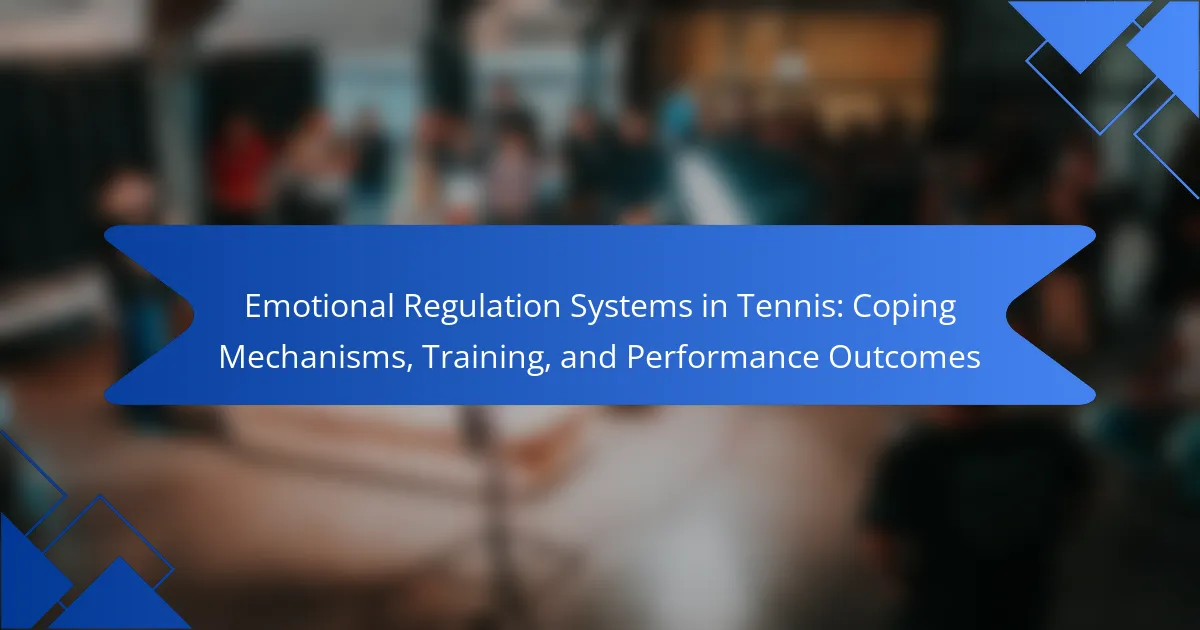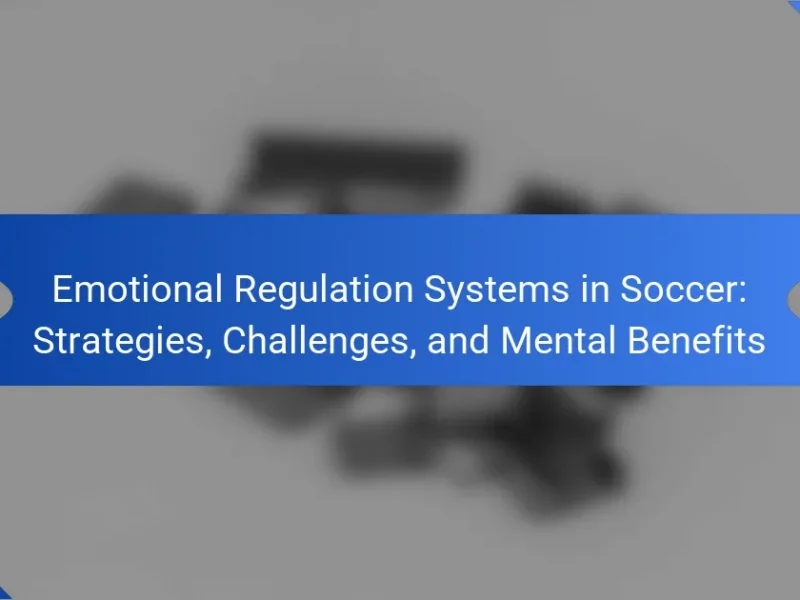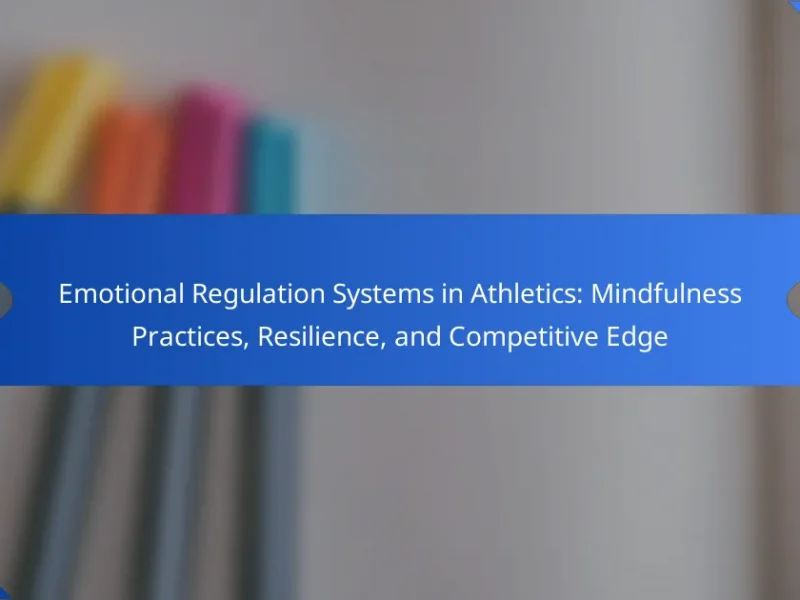Emotional regulation systems in tennis significantly impact performance and resilience. This article explores key coping mechanisms, training techniques, and the relationship between emotional regulation and performance outcomes. Techniques such as mindfulness and cognitive reframing enhance focus and decision-making. Understanding these systems can lead to better stress management and improved results on the court.
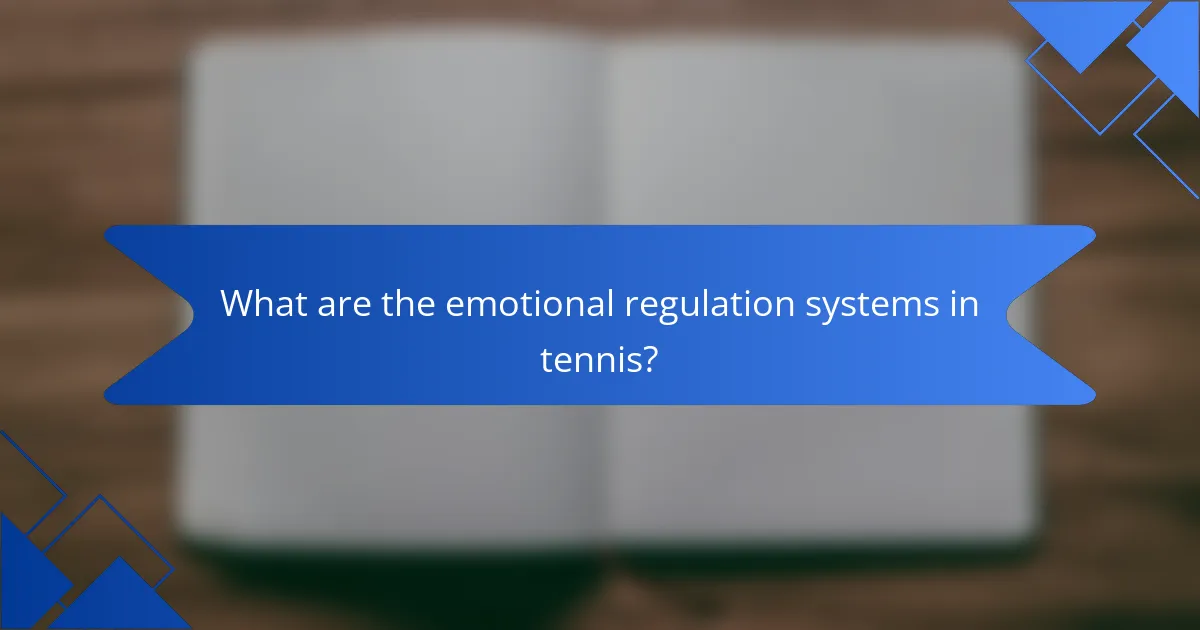
What are the emotional regulation systems in tennis?
Emotional regulation systems in tennis involve strategies athletes use to manage their emotions during competition. These systems enhance performance by promoting focus and resilience. Techniques include cognitive reframing, mindfulness, and breathing exercises. Research indicates that players who effectively regulate emotions experience improved game outcomes and reduced stress levels.
How do emotional regulation systems impact performance in tennis?
Emotional regulation systems significantly enhance performance in tennis by improving focus and resilience. These systems enable athletes to manage anxiety, maintain composure, and recover from setbacks during matches. Effective coping mechanisms, such as mindfulness and cognitive restructuring, lead to better decision-making and shot execution. Training that incorporates emotional regulation techniques can result in improved competitive outcomes and overall mental toughness.
What are the core coping mechanisms used by tennis players?
Tennis players utilize various core coping mechanisms to manage stress and enhance performance. These include mental visualization, deep breathing, positive self-talk, and mindfulness techniques.
Mental visualization helps players imagine successful plays, boosting confidence and focus. Deep breathing techniques reduce anxiety and promote relaxation during high-pressure moments. Positive self-talk reinforces a constructive mindset, allowing players to overcome negative thoughts. Mindfulness practices enhance present-moment awareness, improving emotional regulation and decision-making on the court.
These coping mechanisms contribute significantly to performance outcomes, enabling players to maintain composure and resilience throughout matches.
What techniques are commonly employed for emotional regulation?
Common techniques for emotional regulation in tennis include mindfulness, cognitive restructuring, and self-talk. Mindfulness helps players stay present and manage anxiety. Cognitive restructuring involves reframing negative thoughts to enhance focus. Self-talk fosters motivation and resilience during matches. These strategies can improve performance outcomes by reducing emotional distress and enhancing concentration.
How does emotional intelligence influence coping strategies?
Emotional intelligence enhances coping strategies by enabling athletes to manage stress and maintain focus. It fosters self-awareness, allowing tennis players to recognize emotional triggers during matches. This awareness aids in developing effective emotional regulation systems, which are crucial for performance. Research indicates that higher emotional intelligence correlates with improved resilience and adaptive coping mechanisms, leading to better outcomes in high-pressure situations. For instance, players with strong emotional intelligence are more likely to employ positive self-talk and visualization techniques, which enhance their overall performance.
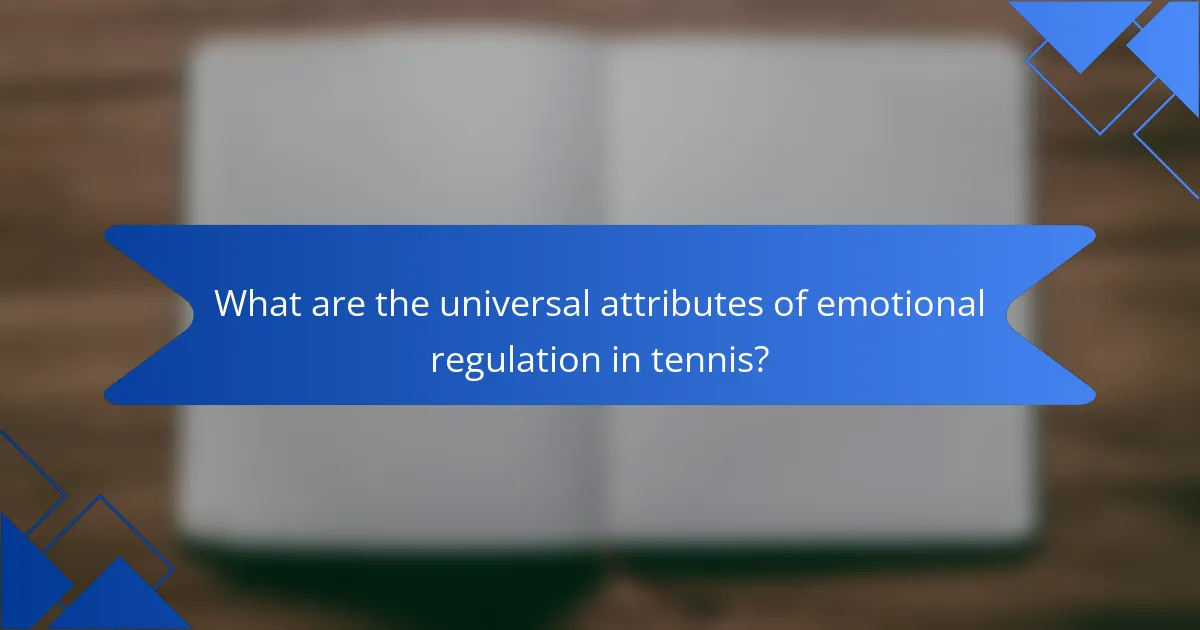
What are the universal attributes of emotional regulation in tennis?
Emotional regulation in tennis involves managing emotions to enhance performance. Key universal attributes include self-awareness, coping strategies, resilience, and focus. These attributes contribute to better decision-making and stress management during matches. Effective emotional regulation leads to improved performance outcomes and consistent play.
How do emotional regulation systems relate to stress management?
Emotional regulation systems are crucial for effective stress management in tennis. They help athletes maintain focus and composure during high-pressure situations. Training in these systems enhances performance outcomes by reducing anxiety and improving decision-making. For instance, techniques like mindfulness and cognitive restructuring allow players to manage their emotions, leading to better on-court performance.
What role does self-awareness play in emotional regulation?
Self-awareness significantly enhances emotional regulation by allowing athletes to recognize and understand their emotional states. This recognition helps tennis players identify triggers that may affect their performance. Improved self-awareness leads to better coping mechanisms, such as mindfulness and cognitive restructuring, which can reduce anxiety and enhance focus during matches. Research indicates that self-aware athletes demonstrate greater resilience and adaptability, ultimately improving their overall performance outcomes.
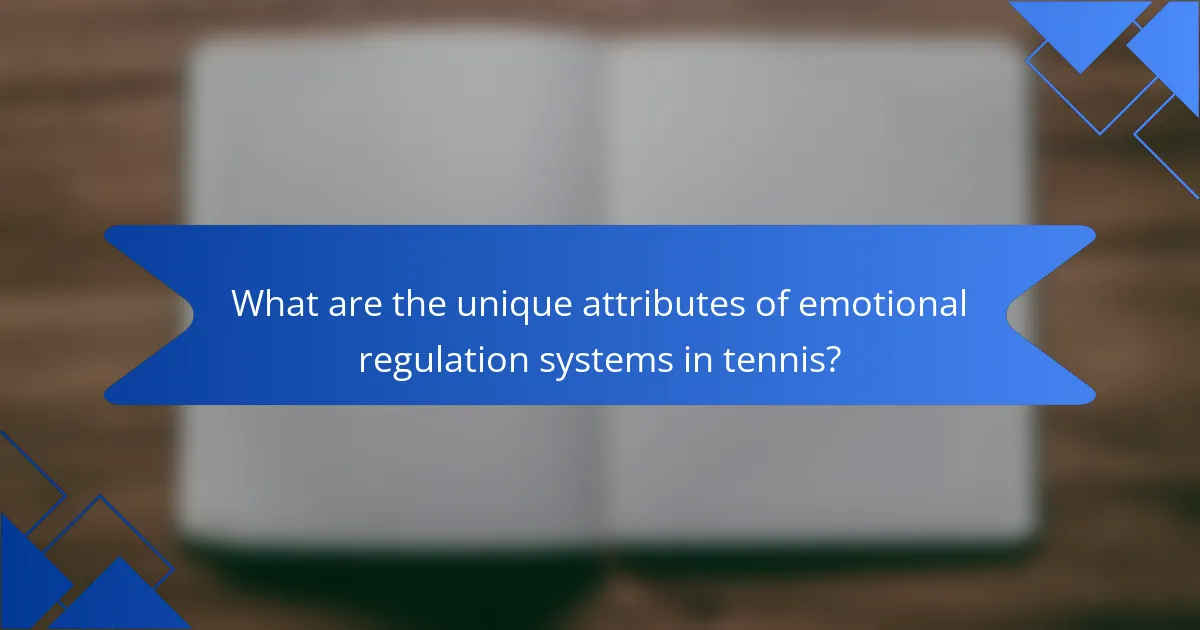
What are the unique attributes of emotional regulation systems in tennis?
Emotional regulation systems in tennis exhibit unique attributes that enhance performance and coping strategies. Key attributes include mental resilience, adaptability to stress, and self-awareness. Mental resilience allows players to recover quickly from setbacks, while adaptability helps them adjust strategies during matches. Self-awareness enables players to recognize emotional triggers, fostering better focus and decision-making. These attributes collectively contribute to improved performance outcomes and effective coping mechanisms in high-pressure situations.
How do individual player experiences shape their emotional regulation strategies?
Individual player experiences significantly influence their emotional regulation strategies in tennis. Players develop unique coping mechanisms based on past performances, training environments, and personal challenges. These strategies can enhance focus, resilience, and overall performance outcomes. For instance, players who have faced high-pressure situations often employ specific techniques, such as deep breathing or visualization, to manage anxiety during competitions. Additionally, the training context shapes these strategies; players exposed to supportive coaching tend to adopt more adaptive emotional regulation methods. Ultimately, the interplay between personal experiences and emotional strategies contributes to a player’s success on the court.
What specific challenges do elite players face in emotional regulation?
Elite players face significant challenges in emotional regulation, including heightened pressure, performance anxiety, and managing expectations. These factors can lead to stress and emotional instability during competitions. Additionally, the intense focus required can result in mental fatigue, hindering their ability to maintain composure. Training in coping mechanisms is essential, yet the unique demands of elite performance create rare emotional situations that test their resilience. As a result, developing tailored emotional regulation strategies is crucial for sustaining high-level performance.
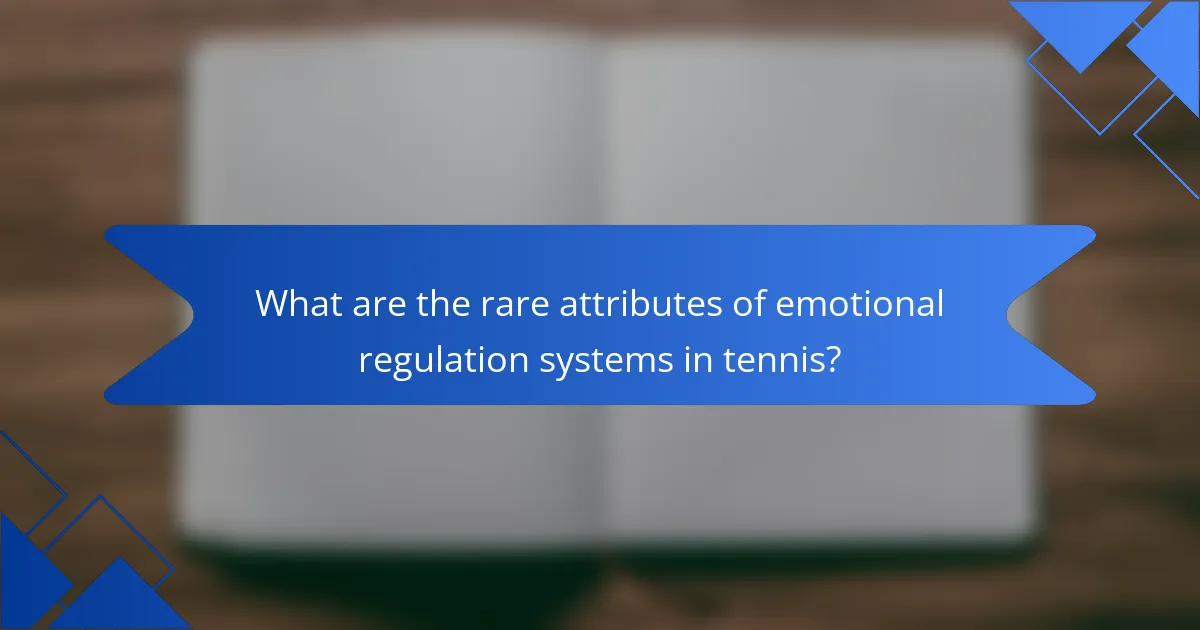
What are the rare attributes of emotional regulation systems in tennis?
Rare attributes of emotional regulation systems in tennis include the ability to utilize mindfulness techniques, which enhance focus under pressure, and the incorporation of biofeedback mechanisms, allowing players to monitor physiological responses. Another rare attribute is the application of narrative reframing, where athletes reshape their internal dialogue to foster resilience. These unique strategies provide a competitive edge in high-stakes situations.
How do cultural factors affect emotional regulation in tennis?
Cultural factors significantly influence emotional regulation in tennis by shaping players’ coping mechanisms and performance outcomes. Different cultures emphasize various emotional expressions and control strategies, affecting how athletes manage stress and pressure. For instance, players from collectivist cultures may prioritize team harmony, impacting their emotional responses during matches. Conversely, those from individualistic cultures might focus on personal achievement, leading to different coping techniques. These cultural nuances can result in unique training approaches that enhance emotional resilience, ultimately affecting performance on the court.
What uncommon coping strategies are used by professional players?
Professional players use uncommon coping strategies such as visualization techniques, mindfulness practices, and biofeedback methods. These approaches enhance emotional regulation, helping athletes maintain focus and composure during high-pressure situations. For instance, visualization allows players to mentally rehearse successful performances, while mindfulness fosters present-moment awareness, reducing anxiety. Biofeedback provides real-time data on physiological responses, enabling players to adjust their emotional states effectively. These strategies contribute to improved performance outcomes by promoting resilience and mental clarity on the court.
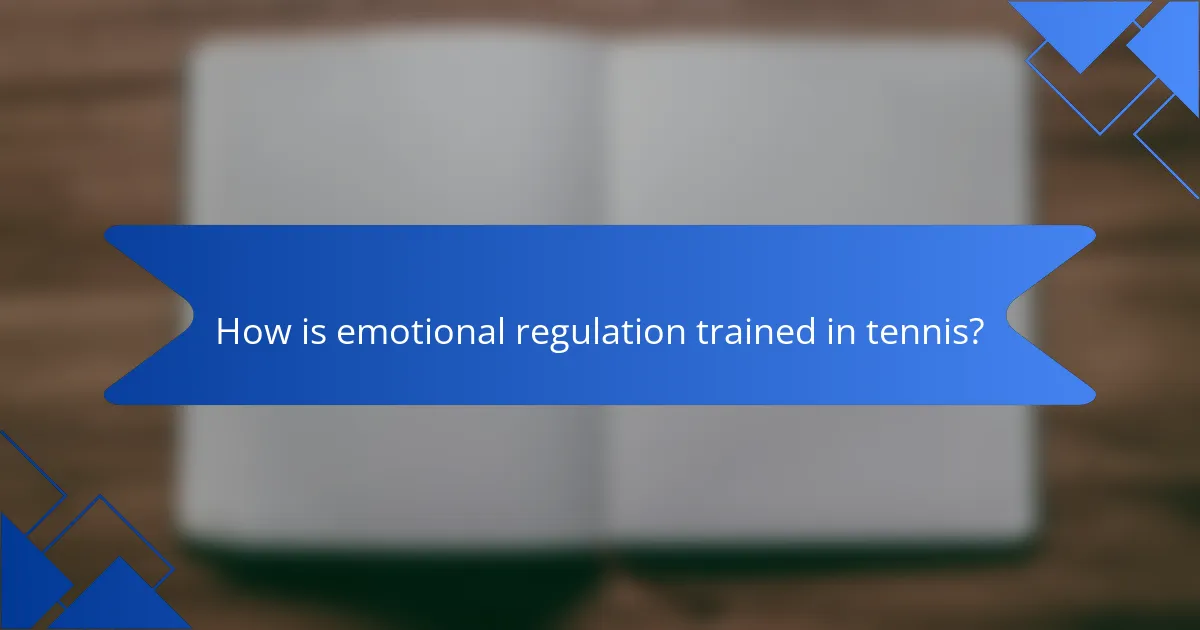
How is emotional regulation trained in tennis?
Emotional regulation in tennis is trained through specific coping mechanisms and mental strategies. These include mindfulness techniques, breathing exercises, and visualization practices that enhance focus and resilience. Players often engage in scenario-based training to simulate high-pressure situations, allowing them to develop emotional responses and coping strategies. Research indicates that athletes with strong emotional regulation skills perform better under stress, leading to improved performance outcomes.
What training programs are effective for developing emotional regulation skills?
Effective training programs for developing emotional regulation skills in tennis include mindfulness training, cognitive-behavioral techniques, and scenario-based simulations. Mindfulness training enhances awareness of emotions, allowing athletes to respond rather than react. Cognitive-behavioral techniques help in reframing negative thoughts, promoting a positive mindset. Scenario-based simulations provide practical experiences to practice coping mechanisms under pressure. These programs improve performance outcomes by fostering resilience and focus during competition.
How do coaches facilitate emotional regulation training?
Coaches facilitate emotional regulation training by implementing structured techniques that enhance athletes’ coping mechanisms. They utilize strategies such as mindfulness, cognitive reframing, and breathing exercises to help players manage stress and anxiety during competition. These methods improve focus and resilience, leading to better performance outcomes. Regular practice of these techniques fosters a supportive environment, allowing athletes to develop their emotional intelligence and self-awareness. As a result, players learn to navigate the emotional challenges of tennis more effectively, enhancing their overall game.
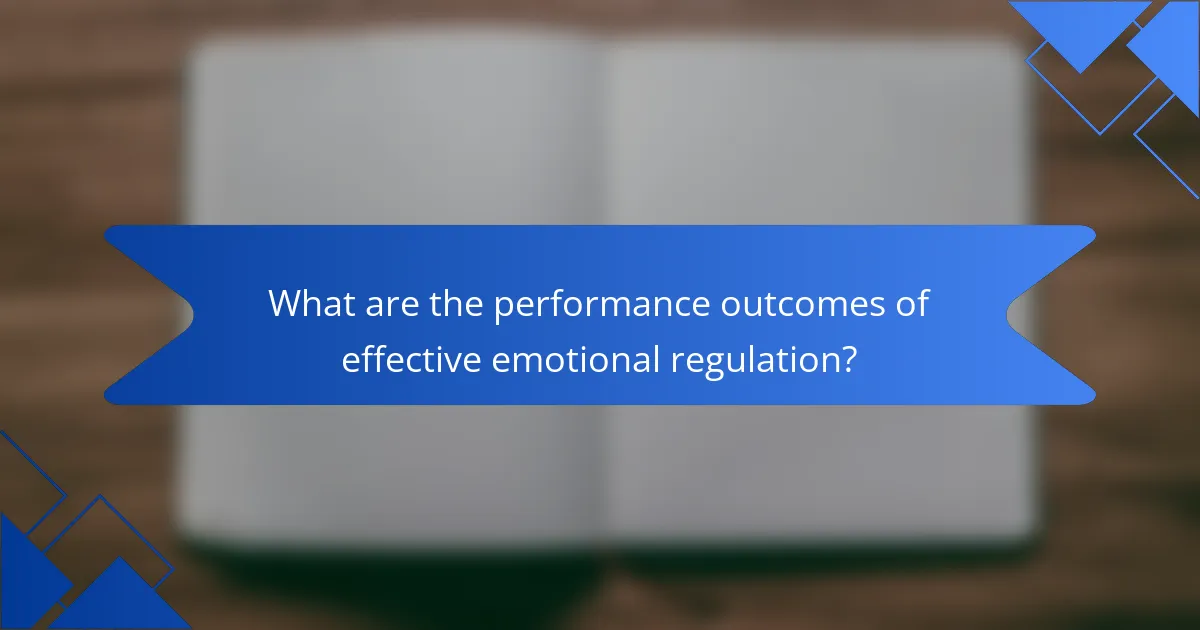
What are the performance outcomes of effective emotional regulation?
Effective emotional regulation in tennis leads to improved focus, enhanced decision-making, and better overall performance. Players who manage their emotions can maintain composure under pressure, resulting in higher win rates. Studies show that athletes with strong emotional regulation skills often exhibit superior resilience, enabling them to recover quickly from setbacks during matches. This ability to cope effectively with stress contributes to sustained performance levels throughout competitions.
How does emotional regulation influence match outcomes?
Emotional regulation significantly influences match outcomes in tennis by affecting players’ focus, resilience, and decision-making. Effective emotional regulation allows athletes to maintain composure under pressure, leading to improved performance. Studies show that players with strong emotional control often exhibit better consistency and strategic play during critical moments. This ability to manage emotions can differentiate winners from losers, especially in high-stakes situations.
What are the long-term benefits of strong emotional regulation in tennis?
Strong emotional regulation in tennis leads to improved performance, resilience, and mental health. Players with effective emotional control can maintain focus, manage stress, and recover from setbacks. This enhances their overall game strategy and decision-making during matches. Research indicates that athletes with strong emotional regulation report higher satisfaction and lower anxiety levels, contributing to long-term success in their careers.
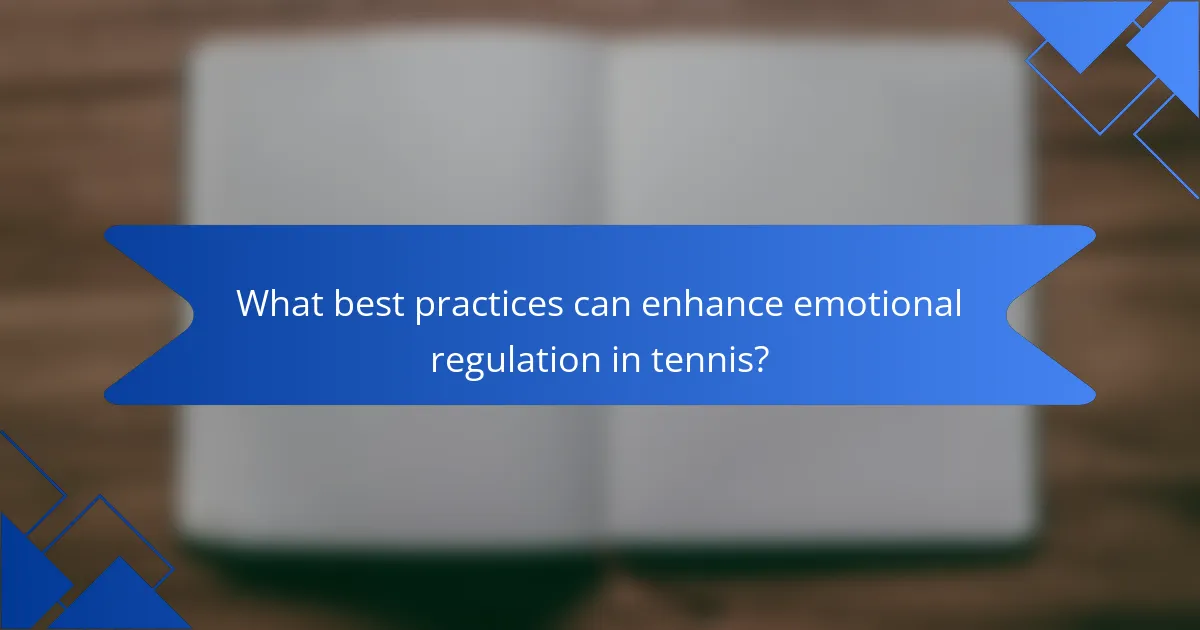
What best practices can enhance emotional regulation in tennis?
Effective emotional regulation in tennis can be enhanced through mindfulness techniques, cognitive restructuring, and consistent practice. Mindfulness helps players stay focused and present, reducing anxiety. Cognitive restructuring allows players to reframe negative thoughts, fostering a positive mindset. Regular training in these areas can lead to improved performance outcomes and greater resilience under pressure.
What common mistakes do players make in emotional regulation?
Players often struggle with emotional regulation by failing to recognize their emotional triggers, which can lead to impulsive reactions. Common mistakes include ignoring negative emotions, overreacting to mistakes, and not utilizing coping mechanisms effectively. Many players underestimate the importance of mental training in enhancing performance outcomes. Emphasizing awareness and proactive strategies can improve emotional management in competitive settings.
How can players optimize their emotional regulation techniques?
Players can optimize emotional regulation techniques by developing awareness, practicing mindfulness, and using positive self-talk. Awareness helps players identify emotional triggers during matches. Mindfulness techniques, such as deep breathing, enhance focus and reduce anxiety. Positive self-talk reinforces confidence, allowing players to maintain composure under pressure. Regular practice of these techniques leads to improved performance outcomes and better coping mechanisms in competitive settings.
